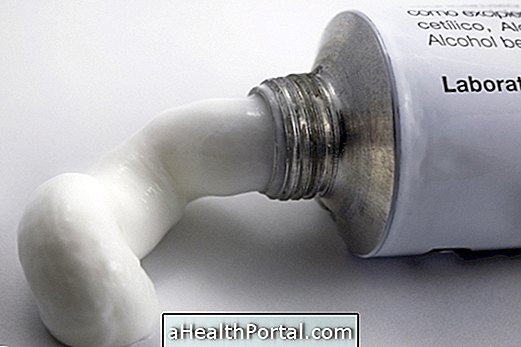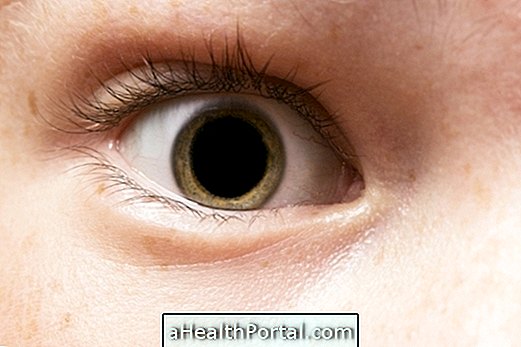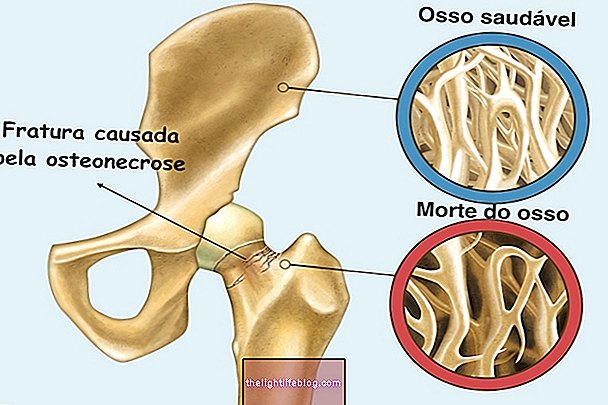Prolonged use of corticosteroids, for longer than 30 days, can increase the fat metabolism, leading to an irregular distribution of fat in the body, especially in the belly, back and neck, in addition to causing swelling and increase of the weight.
In addition, the development of stretch marks, bone pain or decreased sexual desire are other common changes in the use of corticosteroids, such as prednisone or betamethasone, for example, and the chances of developing side effects are higher when using high doses or when rapid withdrawal of the medication occurs without the physician's indication.

Major changes in the use of corticosteroids
Generally, the side effects of these medicines are mild and disappear when you stop using the medication. However, other effects may remain lifelong, and their use for more than 1 month or at very high doses can cause systemic side effects, affecting several organs. Thus, there may be:
1. Weight gain
Redistribution of body fat occurs, as in Cushing's Syndrome, with greater accumulation of fat in the neck, face and supraclavicular area, along with a loss of adipose tissue in the arms and legs. In addition, there may be increased appetite and fluid retention, which causes the person to become swollen and with increased body volume. Here's how to treat Cushing's Syndrome.
2. Development of stretch marks
The use of corticosteroids for more than 3 months can lead to the formation of red striations on the skin, very marked and wide in the abdomen, thighs, sinuses and arms. This is because it inhibits fibroblasts and reduces the formation of collagen, which gives firmness and support to the skin. In addition, the skin becomes thinner and fragile, telangiectasias may arise, causing easy bruising, stretch marks and poor wound healing.


3. Decreased sexual appetite
Decreased sexual appetite can occur because sex hormones, such as testosterone, estrogens and progesterone in the blood, decrease sexual interest. For this reason, there may also be a change in the menstrual cycle or even absence of menstruation.
4. Diabetes and high blood pressure
The use of corticosteroids increases the chances of diabetes in people who are pre-disposed to this event because it leads to a decrease in glucose uptake. Diabetes usually disappears when it stops using the medicine and only remains when individuals are genetically predisposed to the disease.
In addition, blood pressure may also increase because it is common for sodium to be retained in the body.
5. Fragility of bones
The use of corticosteroids for at least 1 year can cause a decrease in calcium absorption, making bones weaker, causing recurrent fractures due to problems such as osteoporosis, for example, the spine, ribs and hips being the bones most affected. The loss of trabecular bone can reach 12% as early as the first year of use.
6. Changes in the stomach and intestine
The use of corticosteroids can lead to symptoms such as heartburn, reflux and abdominal pain and may arise when using these remedies for a few days or concurrent with anti-inflammatories such as ibuprofen, for example. In addition, the development of ulcers in the stomach may occur.


7. Most frequent infections
Individuals who take at least 20mg / day of prednisone are at increased risk of developing infections, such as a urinary or respiratory infection, because it lowers the body's defenses. Infections by atypical microorganisms and opportunistic infections caused by fungi, bacteria, viruses and parasites, which can lead to serious disseminated infections, are up to 40 times more common in people taking some type of corticosteroid.
8. Vision problems
The use of corticosteroids can lead to changes in the eyes, such as the development of cataracts and glaucoma, increasing the difficulty in seeing, especially in the elderly. Thus, anyone who has or has a history of glaucoma in the family should be tested for regular ocular pressure while taking corticosteroids.
9. Irritability and insomnia
There may be times of euphoria, including times of irritability, crying, difficulty sleeping, and in some cases can lead to depression, as well as memory loss and decreased concentration.
10. Decreased muscle mass
Corticosteroids still reduce muscle mass because it inhibits the synthesis of proteins and increases the consumption of the muscles themselves.
List of common corticosteroids

Hydrocortisone and cortisone are usually the fastest acting medications in the body and therefore are the most commonly prescribed remedies. However, there are several drugs with a corticoid effect, such as:
- Hydrocortisone, cortisone, prednisolone,
- Methylprednisolone, betamethasone, methylprednisolone,
- Parametasone, dexamethasone, businid.
Generally, corticosteroids, which are medicines that help reduce the exaggerated inflammatory process, can be administered inhalation, in tablets, by injections into the vein or through ointments, for example, and usually the side effects appear more quickly when it is in injections or orally, and should be used only by medical indication.
Side Effects of Steroids in Pregnancy
Corticosteroids can be used in pregnancy since they are recommended by the obstetrician, since the risk of causing changes in the baby's development is reduced.
However, during the first 3 months of gestation there is a greater chance of developing changes in the mouth such as cleft palate, premature birth or a very low birth weight baby. High doses can lead to decreased growth of the baby still in the womb and increases the chances of prematurity.
Side effects of corticosteroids in infants
The use of corticosteroids by infants and children can lead to delayed growth, causing low and low weight children, because of the decrease in calcium absorption by the intestine and destruction of muscles.





















